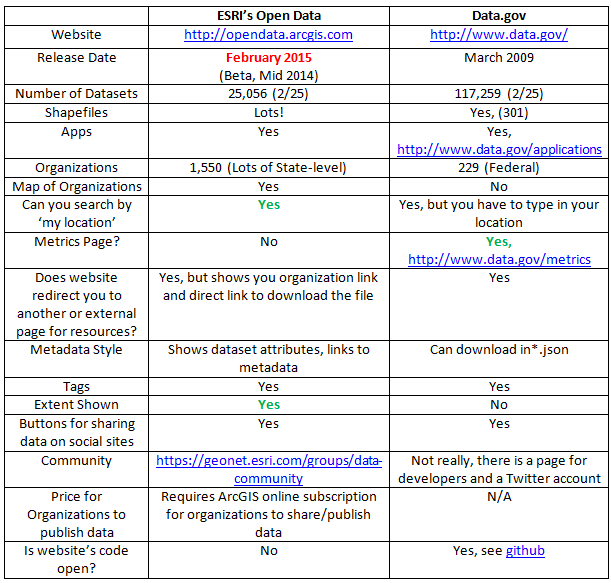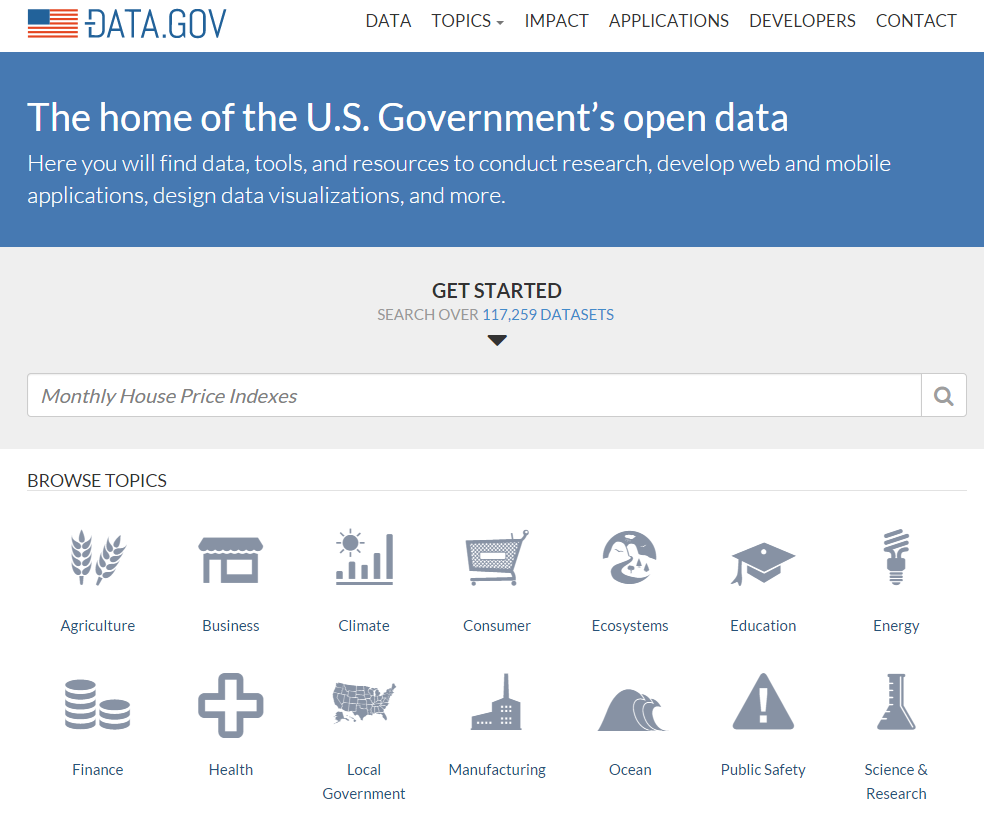ESRI recently announced its open data website (http://opendata.arcgis.com/), which was in beta in mid-2014, so I decided it was a good time to take a look. More and more open data is being published in a variety of places, by different organizations.
I thought it was only fair to make some comparisons. Because ESRI's user base and audiences are large, I decided the best comparison is Data.gov. The only drawback is that Data.gov has been in existence longer.
Of course, open data is important regardless of the platform. Moreover, open data can be imported into any free and open source GIS.
 A table comparing ESRI's Open Data vs. Data.govOne big advantage of ESRI's Open Data page is being able to view geographic data in your browser immediately and even see some attribute data.
A table comparing ESRI's Open Data vs. Data.govOne big advantage of ESRI's Open Data page is being able to view geographic data in your browser immediately and even see some attribute data.
Data.gov's metrics pages are really neat including one on data sets published by agency by month: . Most data sets come from NOAA and USGS, which can be accessed in several different ways. Obviously, a lot of the pages linked from Data.gov either use ESRI formats or are driven by ESRI products. For developers it is also important to note that Data.gov has challenges/competitions. So be sure to check their website and social media!
 Data.gov helps you get started with browsing categories.Currently, Data.gov has more data sets but it will be interesting to see how much ESRI can catch-up in the months to come. It is a win-win situation for any data scientist or GIS analyst. As open data sites get larger, they can become harder to search and navigate. In sum, both sites will have to keep innovating to help bring out the best in open data and analysis.
Data.gov helps you get started with browsing categories.Currently, Data.gov has more data sets but it will be interesting to see how much ESRI can catch-up in the months to come. It is a win-win situation for any data scientist or GIS analyst. As open data sites get larger, they can become harder to search and navigate. In sum, both sites will have to keep innovating to help bring out the best in open data and analysis.
أكثر...
I thought it was only fair to make some comparisons. Because ESRI's user base and audiences are large, I decided the best comparison is Data.gov. The only drawback is that Data.gov has been in existence longer.
Of course, open data is important regardless of the platform. Moreover, open data can be imported into any free and open source GIS.
"[Open data's] impacts include... cost savings, efficiency, fuel for business, improved civic services, informed policy, performance planning, research and scientific discoveries, transparency and accountability, and increased public participation in the democratic dialogue." - Data.gov
One big difference between the sites is ESRI's contains lots of data from States vs. federal (state, and local) data found in Data.gov. ESRI touts that it works with more than 380,000 organizations across the globe, so more open data is on its way!Data.gov's metrics pages are really neat including one on data sets published by agency by month: . Most data sets come from NOAA and USGS, which can be accessed in several different ways. Obviously, a lot of the pages linked from Data.gov either use ESRI formats or are driven by ESRI products. For developers it is also important to note that Data.gov has challenges/competitions. So be sure to check their website and social media!
أكثر...
